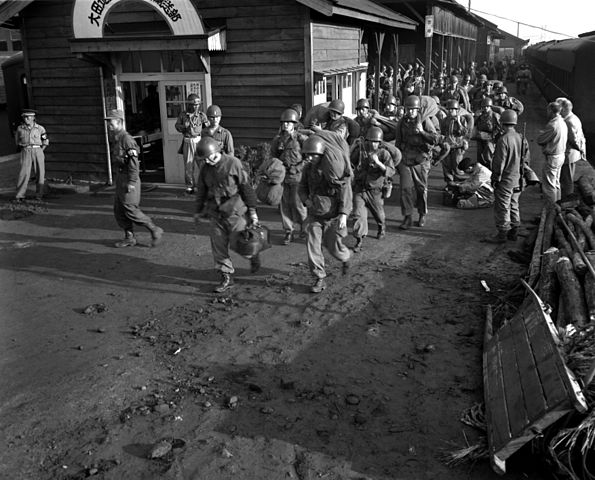
Here we are again. Since World War I the United Sates has consistently entered into a post conflict reduction of military capacity that attempts to rebalance the national ledgers and reign in spending. The contemporary conversation inside the Beltway is saturated with opinions on the best way to proceed this time, even though our nation is still involved in combat operations in Afghanistan.
The “peace dividend,” aptly described by President George H.W. Bush, aims to capitalize on savings achieved by reducing military spending. It was most apparent following the Second World War when the US Army shrunk to one sixteenth of its war time strength in just three years.
However, a stark reminder of the consequences of this fiscally driven risk soon became clear as Task Force Smith, a hastily assembled, poorly resourced unit composed of soldiers focused on occupation duty in Japan, was thrust into the unachievable task of repelling the North Korean advance into its southern neighbor in 1950. The force suffered heavy losses and could not halt the advancing North Korean army. The failure of Task Force Smith is frequently associated with the price the United States paid for trading away military readiness in favor of cost savings. In the case of Task Force Smith, it was a price paid in blood. Is the road our politicians have paved for us driving us down a bitterly familiar path?
What is unique to the modern iteration of cycle are the budgetary constraints imposed by an ineffectual Congress. The debilitating combination of the sequester and the continuing resolution are profoundly impacting military readiness. The sequester cuts spending across all levels, indiscriminately impeding the ability to manage or prioritize funding while the continuing resolution prolongs the spending authorization from the previous fiscal year. Neither enables a logical or rational management of resources that will ensure military readiness.
Unfortunately, this degradation in readiness is not immediately clear to our nation. Readiness degrades gradually as opportunities to sustain qualifications or replenish stocks diminish. It returns even slower. This gradualness enables the perception that nothing has changed. In fact, some would think that all the warnings regarding the disastrous consequences of sequester that preceded its implementation was nonsense.
Truth be told, the warnings are being realized. Unbeknownst to most are the staggering impacts already affecting readiness. Squadrons of aircraft have been grounded. Training ranges have been closed. Critical maintenance facilities have decreased their productivity. Scheduled deployments have been postponed.
Without a doubt, there is a need for a reduction in spending and the Defense Department has been forthright in its intent to address our national debt through thoughtful and targeted spending cuts. It is the methodology of the budget reductions imposed by Congress, in the form of the sequester and the continuing resolution that is adversely impacting readiness, not the diminishing fiscal resources. Neither the sequester nor the continuing resolutions enable a deliberate spending strategy. Our Congress has the ability to address this issue through the repeal of the sequester legislation and by meeting their obligation to pass a budget.
The longer the sequester continues, the more the nation will see it as an acceptable means of managing defense spending. Will it take a tragedy such as Task Force Smith to compel our legislators to act? As noted recently by a senior defense leader, readiness has no constituency and therefore no voice on Capitol Hill.
Lieutenant Colonel Pete Dillon is the commandant of the Marine Corps fellow at the Atlantic Council.
Photo credit: Wikimedia
Image: 595px-Task_Force_Smith.jpg
